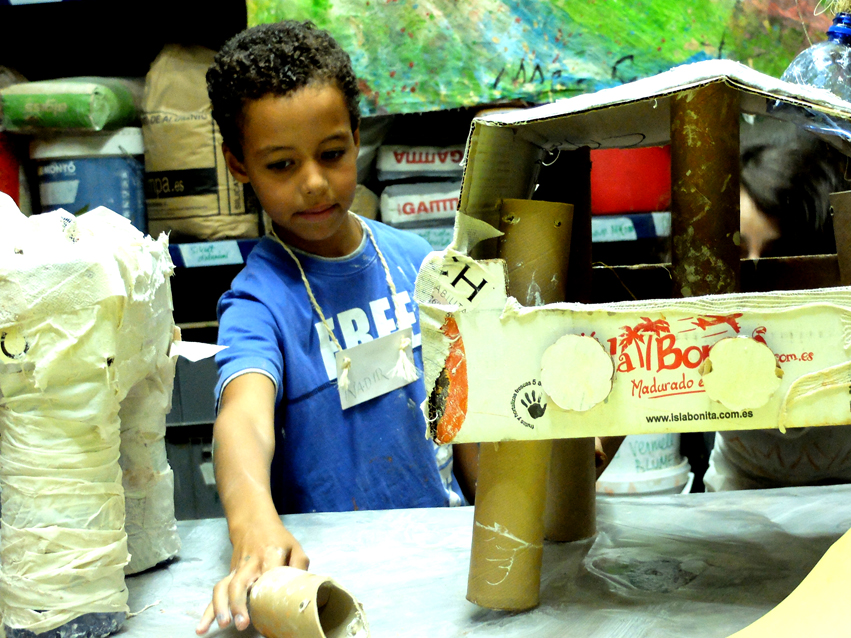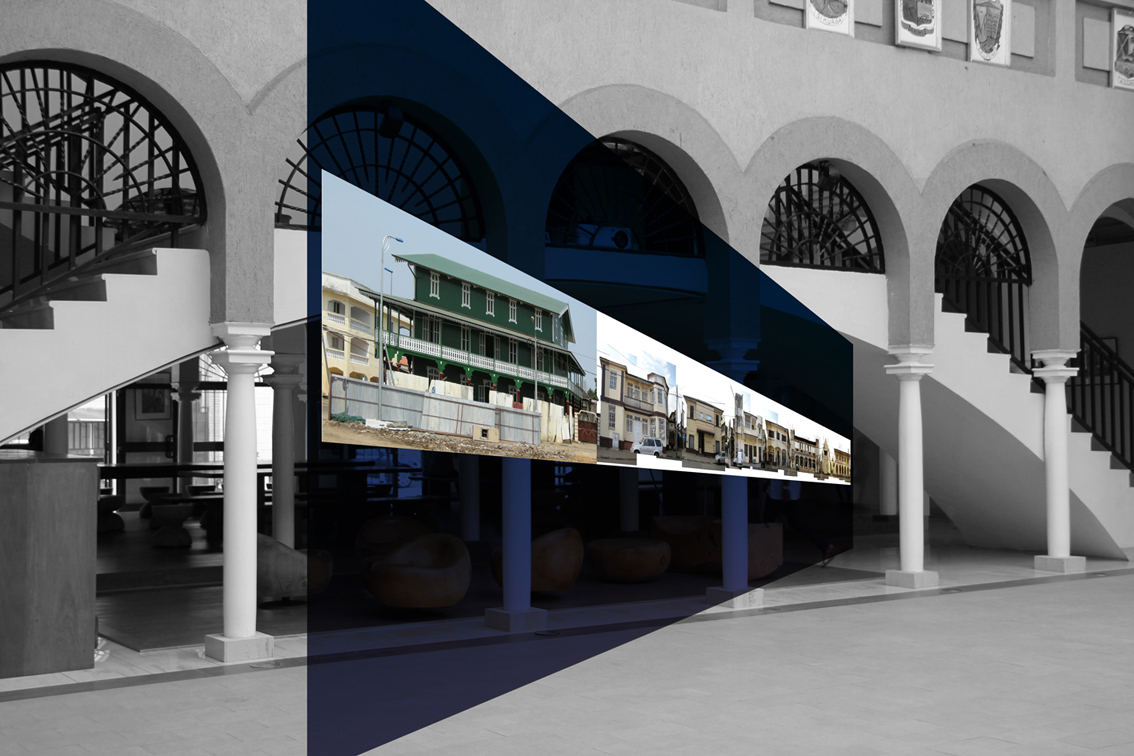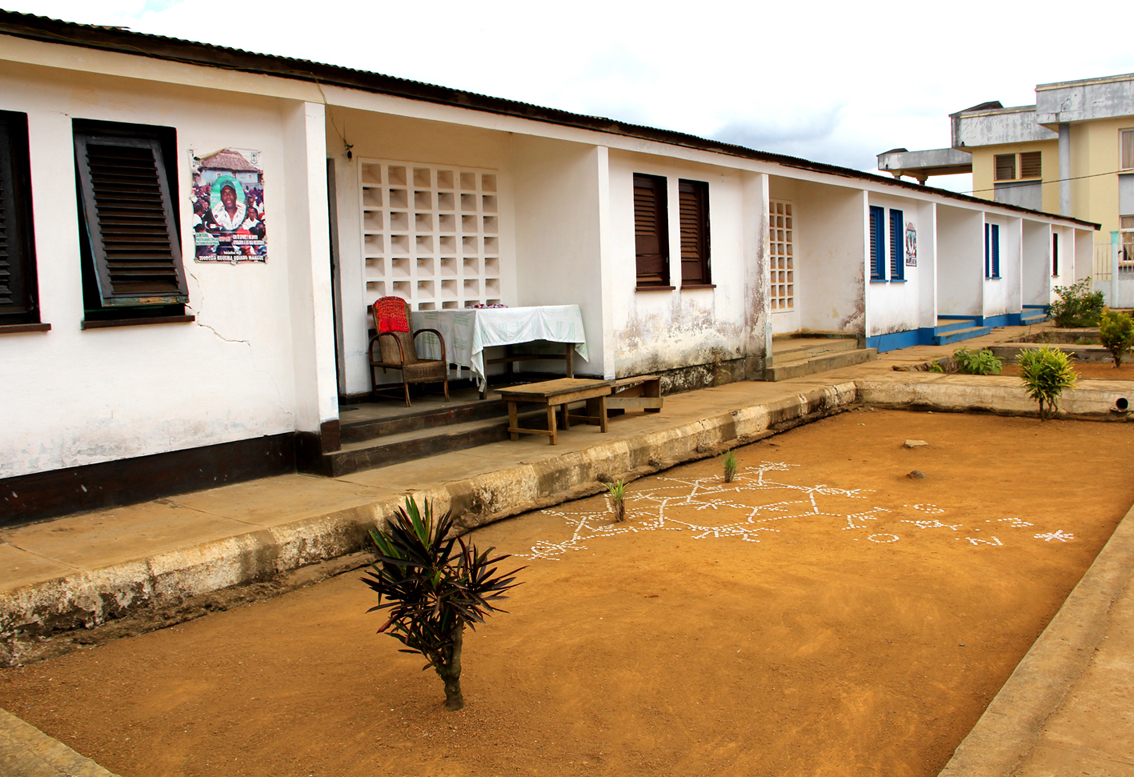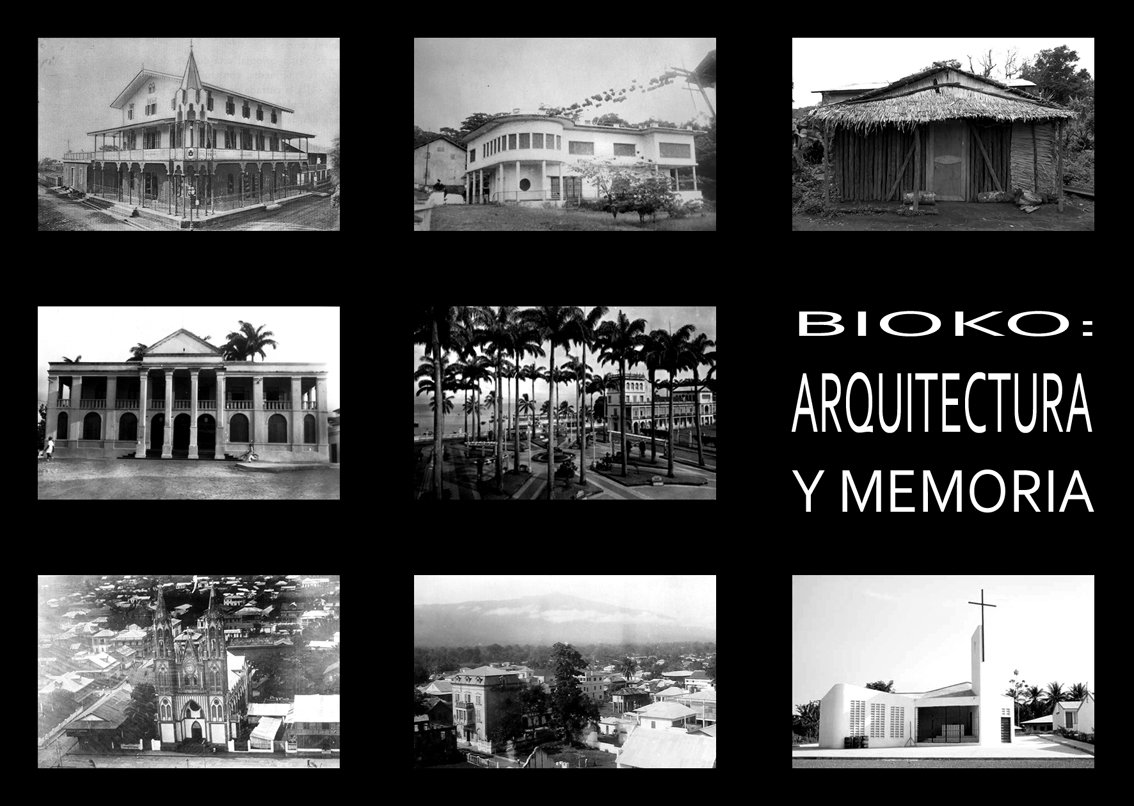PATRIMONIO EXPRESS: LAS CASAS DE LA PALABRA
ACTIVITIES
Culture is internationally considered the fourth pillar of sustainable development, and cultural and heritage diversity forms the base of this pillar. It is vital to raise the awareness of all the agents involved in heritage management, and to facilitate the appropriation of heritage by civil society. All the actions outlined in this project share the fundamental objective of raising awareness and disseminating the architectural and urban heritage of Equatorial Guinea, publicising it and helping to create a higher profile at local, national and international levels.
The various activities are directed at a broad spectrum of the population, ranging from children to heritage professionals. In the first phase, this takes the form of promoting research and creating tools to bring this knowledge to very different publics.
Educational dossiers about The City and Public Space in Malabo and Palaver Huts in Bata
In preparation for the heritage weeks in Malabo and Bata, educational dossiers for the activities will be published so they can be used in schools and introduced into the syllabus. They will deal with discovering, interpreting and recreating spaces and architectures that define specific ways of living together and socializing.
Heritage weeks in Bata and Malabo
Workshops on “Public Space” in Malabo and “Palaver Huts” in Bata will be the activities organized during the weeks dedicated to heritage. For five days, different schools will use the educational dossiers, with the active participation of teachers.
Congress: Architecture in Equatorial Guinea
The first congress on “Architecture in Equatorial Guinea” will be held in Malabo, open to national and international experts as well as students in different disciplines.
In addition to the keynote talks and the papers chosen by the scientific committee, the congress will include a specific area for debate with a variety of workshops.
Exhibition: GUINEA HERITAGE 2020: Kaleidoscope
A travelling exhibition is envisaged, directed at a broad sector of the population with the aim of involving and sensitising both civil society and professionals in the culture and tourism sectors.
Conceptually, it will be based on nine areas, analysing the various architectural and urban typologies. It will include models of different buildings, created specially for the exhibition.
All the exhibition texts will be in Spanish, though the various Equatoguinean languages will be used in each of the different blocks.
Catalogue raisonné of architectural and urban heritage
The expert team’s work on architecture and urban design will be documented in a publication bringing together the research and actions carried out by each member. An analysis of the various architectural and urban typologies; an account of ways of life in traditional settlements; an explanation of traditional construction techniques; a presentation of the projects for wooden houses in Bioko; the architecture of the modern movement, and the urban and architecture interventions currently being carried out are some of the aspects that will be given in-depth coverage in this publication.
It will include four monographics on works chosen for their value as complexes or their singularity. The catalogue will also include in its annexes a revised bibliography and a detailed exposition of the documentary holdings consulted.
Display: GUINEA HERITAGE 2020: Challenges in the Task of Revaluation
In December 2014 and January 2015, displays will be organized at Equatorial Guinea’s embassies around the world with the title “GUINEA HERITAGE 2020: Challenges in the Task of Revaluation”.
This is an initiative to promote knowledge of the country’s rich and varied heritage elements, and to plan actions for implementation up to 2020 with the aim of ensuring appreciation and protection as national and world monuments.
Merchandising
Giving heritage a higher profile will encourage the people of Equatorial Guinea to appropriate their heritage and enable visitors and tourists to recognise an international brand: GUINEA HERITAGE 2020. T-shirts and caps, notebooks and pencils, and postcards and bookmarks will be the products included in merchandising for all publics, including the youngest.
PROJECT
Equatorial Guinea has an exceptional body of heritage, ranging from the vernacular to the modern movement.
As a whole, it remains undervalued by the national and international community, basically due to its low profile and the need to carry out more public actions to increase its appreciation. The country’s heritage, like its culture, is diverse, and it is this diversity, created by the coming together and materialization of the different cultures that exist there, that makes it exceptional.
Equatorial Guinea is undergoing a major social and economic transformation. Due to the speed at which it is happening place, this transformation, which aims to improve the living conditions of its population, also calls for the mutation of its historic and heritage legacy.
To ensure that economic growth and increased appreciation of the country’s culture and heritage legacy go hand in hand, in accordance with the recommendations of international world heritage bodies, all of the actions involved in the project will follow the guidelines of the Paris Declaration on Heritage as a Driver of Sustainable Development and the Recommendation on the Historic Urban Landscape signed by the Unesco in 20.
BACKGROUND
The actions carried out in the 2010-2013 period, directed by the architect Laida Memba, laid the bases of the task of encouraging knowledge and dissemination of Equatoguinean heritage. This is a body of knowledge based on field work, site surveys, preparatory archive work, and documentation of written and oral sources of this historic legacy. The task of dissemination centred on bringing heritage to public attention, as well as raising awareness among both the population and international professionals.
At national level, actions took the form of presence in written and audiovisual media. In addition to the exhibition “Bioko: Architecture and Memory” as an act of general dissemination, other products such as postcards and calendars aided initial awareness, giving glimpses of the country’s wealth and potential in terms of heritage at the small and the large scale.
At international level, activity had an even higher profile. For the first time, Equatoguinean heritage was presented at international professional forums. Together with the leading countries in heritage management, Equatorial Guinea presented its tangible and intangible richness, and expressed the desire to implement this heritage as a driver of sustainable development.
Internet presence, with a portal for the project, also boosted dissemination among younger publics, involving them actively with a language and a set of tools that are more familiar to them.
All of these actions were carried out with the funding of the AECID, through La Salle School of Architecture (Ramon Llull University), the UNESCO Chair of the same university, the Centro Cultura Español in Malabo and private contributions. At the same time, many prestigious institutions and associations gave their direct support to the project start-up, considering its importance to the country’s wealth. The scientific committees of some of these bodies include representatives of the UNESCO and ICOMOS; this is the case of RehabiMed (an international association for the dissemination and rehabilitation of architectural and urban heritage) and the UB (Barcelona University) with its participation in the project “The Slave Route”. The project also received the endorsement of various universities and professional institutions: the ETSAB (Barcelona and El Vallès School of Architecture) and the COAC (Architects’ Association of Catalonia). It was also backed by NGOs and associations such as Desarrollo 2000 en África, Asociación E’waiso Ipola and Asociación Riebapuá.







